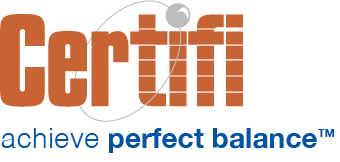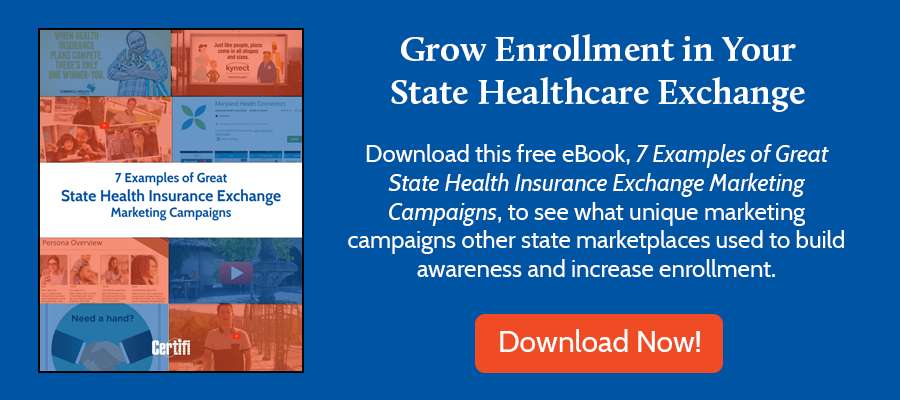Five states – Colorado, Idaho, Massachusetts, Minnesota, and Nevada – recently released their state health insurance exchange annual reports. As you’ll see, these state exchange annual reports deliver a lot of useful information that can help other state exchanges or states considering a transition to a state-based exchange generate ideas to improve customer service, technology, marketing, or finance. Among the key discoveries:
- Investments that improve the consumer experience and enhance enrollment can help exchanges that rely on premium fees remain financially sustainable.
- Technology investments like those Colorado made on shopping and other underlying infrastructure can lower expenditures long-term.
- Idaho’s unique purchase of an office building serves two purposes. First, it gives the team a location to work. Second, it diversifies its revenue stream, an important consideration for one of the few state exchanges that saw an enrollment decline in the 2021 plan year open enrollment period.
- Targeted marketing — whether by location or to consumer populations known to have high uninsured rates — can help increase enrollment.
Read on to learn more detail about these 2020 state exchange annual reports:
The Impact of COVID-19
It’s not hyperbole to say the COVID-19 pandemic impacted every organization around the world. So it’s not surprising that every state insurance exchange annual report spent a considerable amount of time discussing the impact of the COVID-19 pandemic. Here’s a look at some of the highlights:
Colorado
The pandemic impacted Colorado’s ability to implement planned technology enhancements. First, the state decided to open a Special Enrollment Period (SEP) due to the coronavirus, which took resources from the technology advancement project. Then, members of the development team suffered from COVID-19, which further delayed development. As a result, some legacy code remained at launch, which caused difficulty during open enrollment.
Colorado also pitched in to help the state’s COVID-19 response. Members of the customer service team leveraged their expertise to help hire and train 160 people to operate the COVID-19 Call Center. The call center delivers outbound call support for COVID-19 tests as well as answering inbound calls from those who couldn’t be reached.
Idaho
Idaho, one of the only states that didn’t open a SEP, also faced challenges due to COVID. A stay-at-home order forced the exchange’s internal customer support team to work from home and limited support to email for a few weeks. Though there wasn’t a SEP, enrollment rules were relaxed so that those who lost their jobs due to COVID could receive coverage faster.
Like other states, Idaho modified its outreach plans as in-person events and face-to-face meetings weren’t possible. The good news: the virtual events proved to be successful and the state will continue to plan virtual outreach to maximize exposure, even after things return to normal.
Massachusetts
Like Colorado, Massachusetts leveraged its state exchange in unique ways to combat the COVID-19 pandemic. The state recognized that the exchange, Health Connector, has experience in IT contracting, system integration, contact center procurement, and project management. As a result, they leveraged that experience to help support the state’s contact tracing effort.
Like other states, Massachusetts opened a SEP that resulted in almost 23,000 residents enrolling in coverage through the state exchange. Between April and July, another 33,000 members transitioned to a more affordable exchange plan or moved to the state’s Medicaid program as a result of job loss or income reduction.
Among the other strategies deployed by the state:
- Targeted outreach to the newly uninsured
- Increased messaging to members to report income changes
- Made it easier for members to transition quickly to new plans based on reported income changes
- Partnered with other state agencies and non-state groups to connect residents to other state resources
Minnesota
Minnesota also leveraged its state exchange — called MNsure — to manage the COVID-19 response. Instead of leveraging staff, however, the legislature approved funding to compensate navigators, those who assist residents to enroll in insurance, for helping uninsured individuals complete COVID-19 testing applications.
Nevada
Nevada faced many of the same challenges as other states. They quickly transitioned to work from home, pivoted to remote meetings with outreach partners, and developed a new ad campaign highlighting people living with the realities of COVID. The ad campaign targeted newly unemployed Nevadans, gig employees, culturally diverse populations, parents, and others.
The state also worked with the Department of Employment Training and Rehabilitation (DETR) to help promote the exchange to those who were filling unemployment claims. DETR included open enrollment content on their social media and web pages and inserted exchange information into outbound mail, as well.
Enrollment Generally Increased
Colorado releases its state exchange annual reports before Jan. 15, 2021, the end date for open enrollment, but enrollment stood at more than 168,000, ahead of the nearly 167,000 that enrolled the previous year. Minnesota saw a 4% increase compared to the previous year. In all, 122,269 individuals enrolled, with about half of those enrollees receiving tax credits. Massachusetts’ report covered the fiscal year 2020, which did not include the most recent open enrollment. However, enrollment at the end of the fiscal year 2020 stood at nearly 298,000 individuals, an increase of 4% when compared to the previous plan year. Nevada enrolled nearly 82,000 individuals, up from over 77,000 in 2019.
The only state of the five that experienced a decline was Idaho. Enrollment declined from over 78,000 to roughly 69,000, though that information wasn’t included in the annual report. Idaho expanded Medicaid in 2020, which led to a decline from 2019 to 2020 and may have also contributed to a decline from 2020 to 2021. The expectation is that some number of people who are on Medicaid saw their incomes rise above the 138% Federal poverty level but weren’t removed from Medicaid because the federal COVID response act disallowed Medicaid re-verifications during the pandemic. Those individuals would have normally transitioned to an exchange plan. That said, it’s unlikely that explains all of the enrollment declines in Idaho.
Customer Experience Improvements
Idaho’s customer improvement initiatives included evolving their in-house customer support team that provides front-line support to residents seeking insurance. The team hired new employees at the management and supervisory level. Then, they reworked their structure to deliver more one-on-one coaching and direct feedback for team members. These investments resulted in a Net Promoter Score of 37, above industry standards.
Idaho also invested in an agency portal designed to help agents and brokers service their customers. The portal enables agents to better manage high volumes of consumer requests. Consumers, meanwhile, benefit by having multiple individuals working on their behalf.
Minnesota implemented several service team improvements designed to improve the consumer experience:
- Implemented faster multifactor authentication to the state’s eligibility system, METS, saving 3 to 5 minutes of hold time.
- Improved the online document submission workflow to create faster verifications
- Upgraded mail and document indexing technology to improve the availability of correspondence to staff
- Improved their CRM system to improve the ability of staff to provide relevant information
- Implemented a process to generate required tax forms from the enrollment system
Nevada reported that they met 85% of service levels on 27 scorecard call center categories. The state also determined that the consumer/broker experience could be improved by making the interactive voice response system faster.
Colorado, meanwhile, focused on modernizing its technology, including a replacement of the shopping platform and other underlying system infrastructure. The customer service unit also implemented a new call management system. Both were not only designed to improve the consumer experience but also lower operating costs.
Financials
Like most state-based insurance exchanges, Colorado’s primary source of revenue is fees collected from insurers. As a result, the state saw a slight reduction in revenue in 2020 because the state’s new reinsurance program reduced insurance premiums. Expenditures, meanwhile, increased due to the technology investments that were made.
Idaho has a unique financial tidbit. The agency that runs their exchange purchased a building in downtown Boise that not only houses their staff but also several other tenants. The purchase adds a new revenue stream for the exchange.
Minnesota reported that their primary source of funding is through premium fees, though other sources of funding included reimbursements from the state Department of Human Services for activities they performed to benefit Minnesotans looking for low or no-cost insurance. The state also received a reimbursement from the Coronavirus Reimbursement Fund. Minnesota also reported that direct labor and expenses to hold their coronavirus-related SEP in 2020 amounted to about $500,000.
Marketing
Nevada created several ad campaigns related to their open enrollment period using both digital and print. Their paid advertising campaign generated over 53 million impressions with nearly 150,000 clicks to landing pages. They created 67 unique email campaigns and sent nearly a million and a half emails. The concept behind the ads was “Reasons” and outlined specific reasons different target groups — like single moms, those searching for a job, gig workers, the state’s Hispanic population — enroll in health insurance.
Minnesota leveraged statewide TV and radio ads, billboards, and ads at transit stops in addition to digital advertising. The state uses zip code-level data to target areas of the state with high uninsured rates and the campaign was designed to reach Minnesotans who may be looking for insurance on their own for the first time due to the COVID-related economic downturn. Its highest performing messages centered on the financial service available, MNsure’s status as the only place to compare plans side-by-side, and information about the free help available throughout the state. Minnesota also experimented for the first time with running ads outside of the open enrollment period.
Massachusetts’ marketing analysis refers to their 2020 Plan Year open enrollment period. Like Minnesota, they leverage data to determine high concentrations of unemployment to target those areas. In 2020, Massachusetts increased its paid radio and TV ad spots by 60% and 15% respectively. They leveraged similar messages as Minnesota, highlighting the availability of low-cost or even zero-dollar plans and personal assistance. Massachusetts also focused on the state’s individual mandate that requires insurance coverage.
State Exchange Annual Reports
Connect for Health Colorado 2020 Annual Report
Your Health Idaho 2020 Annual Report
Nevada – Silver State Health Insurance Exchange 2020 Executive Director’s Report
Certifi helps private and public health insurance exchanges improve enrollment and build a better member experience with health insurance exchange consolidated billing and payment solutions.



